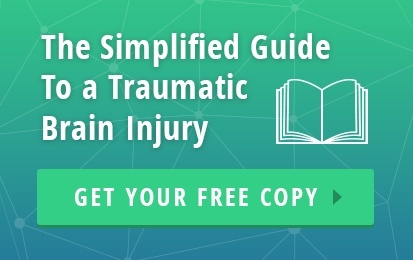Why Everything Hurts after a Traumatic Brain Injury
If you suffer a blow to the head, or if your head is jarred enough so that your brain moves inside your skull, it’s possible that you may sustain a traumatic brain injury (TBI). Depending on the severity of the brain trauma, a TBI is known for causing a variety of different health-related complications, such as confusion, memory loss, tissue damage, swelling, or even a lack of oxygen to the brain.
These may seem like pretty common complications. But, what many survivors don’t expect in the weeks, months, or even years after the event that caused their injury is the feeling of chronic pain that they continue to experience. As it turns out, however, various forms of pain are a highly common complication after a traumatic brain injury.
According to the U.S. Centers for Disease Control and Prevention (CDC), falls are the leading cause of traumatic brain injuries and can result in closed head or open wound brain injuries. However, if it is several months or even years after your injury and your body has seemingly healed, why does it feel like everything still hurts after all that time has passed?
Pain After a Traumatic Brain Injury
Pain is reported to be one of the most challenging difficulties experienced by survivors of traumatic brain injuries. The pain can be acute or chronic, and it can affect a variety of different areas of the body — not just the head. There are two main categories of chronic pain: nociceptive and neuropathic pain. The former is caused by stimuli that are received by the body’s nociceptors; the latter is tied to damage in the body’s neurological system.
TBIs can result in head and neck pain, orthopedic pain, and gastrointestinal issues, among other issues. Unfortunately, however, the mechanisms that link pain to brain trauma is poorly understood, and specific treatments are lacking for TBI-related pain.
One recent study of 94 mild TBI (mTBI) survivors showed that 93% reported head/neck pain, and 64% reported body pain. Another study, a meta-analysis of 23 studies, also showed a significant prevalence of chronic pain in civilians with mTBIs (75%) and 32% for a moderate or severe TBI. A total of 20 studies that included 3,289 civilian patients with TBIs demonstrated a chronic pain prevalence of 51.5%.
The book “Brain Neurotrauma: Molecular, Neuropsychological, and Rehabilitation Aspects” says that a post-traumatic headache (PTH) is the most common chronic pain injury, along with neuropathic pain and pain caused by spasticity (muscle tension) and fractures. It can result in headache disorders, including tension headaches, cluster headaches, and migraines. The symptoms usually develop within seven to 30 days of a brain injury and commonly resolve within 90 days.
However, the book continues:
“Persistence of pain beyond 3 months suggests pain chronicity with underlying peripheral and central sensitization in the trigeminal system... The average onset time for chronic head and facial pain is about 6 months. Thus, the characteristics of chronic pain after TBI resemble those of chronic central pain from other causes, with painful regions exhibiting allodynia, hyperpathia, and wind-up.”
The Impact of a TBI on the Brain’s Frontal Lobe
A study of rodents that was recently published in Nature Communication shows that some spinal cord pain can begin in the brain’s frontal lobe, which is the area of the brain responsible for a variety of cognitive skills, such emotional expression, memory, and judgment. While it’s true that brain activity in the prefrontal cortex (a region of the frontal lobe) would commonly light up when scanned patients experienced pain, the brain activity was always assumed to be a symptom of pain and not the cause of it.
However, if the findings on the mice and rats hold true for humans with similar brain injuries, it may be feasible that treating the pain in this area could be effective at preventing chronic pain for people with TBIs.
Prognosis after a Traumatic Brain Injury
The prognosis and recovery of patients with traumatic brain injuries are never clear cut and frequently depend on a variety of factors that are specific to each patient. Some of these factors include the patient’s age, the location of their brain injury, and if they spent time in a coma (and if so, for how long).
 Early medical treatment and intervention for a brain injury are critical to achieving optimal recovery. Treatments for different types of brain trauma can include brain scans, intracranial pressure monitoring, brain surgeries, medications, mental health therapy, and support groups (depending on the specific type of injury). Additionally, a period of physical rehabilitation is often required during recovery, as it can help to retrain neurons that were lost or damaged as a result of the injury. It also is a way for TBI survivors to relearn functional and physical skills that may have been lost.
Early medical treatment and intervention for a brain injury are critical to achieving optimal recovery. Treatments for different types of brain trauma can include brain scans, intracranial pressure monitoring, brain surgeries, medications, mental health therapy, and support groups (depending on the specific type of injury). Additionally, a period of physical rehabilitation is often required during recovery, as it can help to retrain neurons that were lost or damaged as a result of the injury. It also is a way for TBI survivors to relearn functional and physical skills that may have been lost.
The difficulty for TBI survivors who use some prescription medications is that they may be more susceptible than non-TBI sufferers to the prescriptions’ cognitive side effects. And, in some cases, the meds can actually have adverse effects, such as memory loss.
To learn more about traumatic brain injuries, be sure to review our free resource, The Simplified Guide To a Traumatic Brain Injury.
Stay Updated on Advancements On Traumatic Brain &
Spinal Cord Injuries
About the Author




